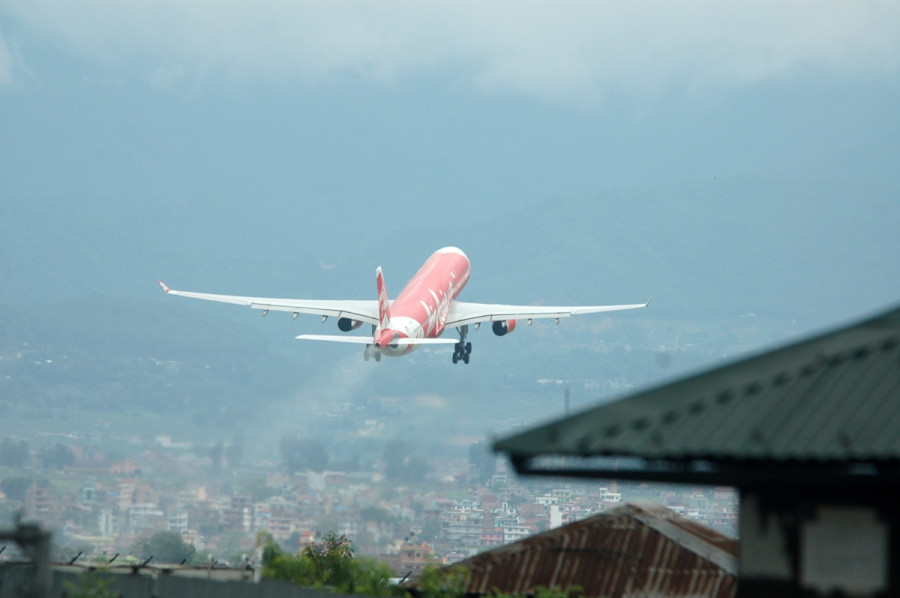Money
Draft Civil Aviation Bill submitted to the Cabinet
A decade-old initiative to break up the civil aviation body is alive once again.
Sangam Prasain
A draft Civil Aviation Bill that envisages splitting the Civil Aviation Authority of Nepal into regulator and service provider was submitted to the Legislative Committee of the cabinet on Thursday, Tourism Ministry Secretary Kedar Bahadur Adhikari told the Post. “We are hopeful that the Cabinet will give its green signal to register the draft bill in Parliament.”
President Bidya Devi Bhandari has summoned the winter session of the Federal Parliament on December 20.
An official at the Civil Aviation Authority of Nepal said that if the legislation was passed by December, Nepal’s case could be put on the agenda of the next EU Air Safety Committee meeting scheduled for April.
The committee, which normally sits twice a year, will decide whether Nepal should be kept on the air safety list or not based on the progress made by its civil aviation body in the past several years.
Adhikari said they were not certain whether Parliament would pass the legislation. “But we are doing our best to get the new law enacted as soon as possible.”
The government has been working on the proposed legislation for the last nine years, but it has been plagued by bureaucracy at every step. Following pressure from a number of global aviation watchdogs, the Cabinet gave the go-ahead to the Tourism Ministry last July to draft two separate aviation bills to break up the Civil Aviation Authority of Nepal.
Due to the delay in passing the legislation, several international aviation safety agencies have even slammed Nepal’s poor progress in ensuring air safety.
The legislation envisages integrating previous acts to eliminate conflicts and contradictions at the Civil Aviation Authority of Nepal, which is currently functioning as both regulator and service provider from the same office, and there is no clear demarcation between its duties and organisational structure.
The proposed law is expected to replace two existing acts, the Civil Aviation Act 1959 and the Nepal Civil Aviation Authority Act 1996.
Rajan Pokhrel, director general at the Civil Aviation Authority of Nepal, told the Post that they could meet the April deadline to put Nepal on the agenda of the European Commission if Nepal’s Parliament passed the new legislation.
On Monday, the European Commission maintained its ban on Nepali airlines for not meeting international safety standards. They remain on the updated EU Air Safety List which means they are still barred from EU skies. The European Union has been off-limits to Nepali carriers for the last six years.
In December 2013, the European Commission imposed a blanket ban on all airlines from Nepal from flying into the 28-nation bloc after the September 2012 crash of Sita Air Flight 601 in the Manohara River that killed 19 people, including seven British citizens.
No Nepali airline flies to the EU, but the commission became concerned enough to prevent them from entering the continent after a spate of air crashes in Nepal. Between 2008 and 2012, there were at least at least two air crashes annually.
In December 2013, the European Commission put Nepal on its air safety list, banning all carriers certified in Nepal from flying into the EU because of significant safety deficiencies requiring decisive action.
“We have done major improvements on the operational and other aspects of air safety. But institutional reform has not moved ahead. Every year, the commission keeps asking us about the reform process,” said Pokhrel.
“If Parliament endorses the bill, we can invite a mission from the commission to do an aviation assessment,” he said. “But even after the law is passed, the commission will observe how the functional separation of Nepal’s civil aviation body will work.”
Based on the current development, they plan to invite the mission of the European Commission by April, according to Pokhrel.
In July 2017, the International Civil Aviation Organisation removed the 'significant safety concerns' tag it had put on Nepal four years ago after assessing that safety standards had improved on a par with global standards.
Under the new civil aviation law, the government plans to overhaul the prevailing hire law and allow any Nepali citizen to apply for the post of director general of the Civil Aviation Authority of Nepal.
Previously, potential candidates had to be a deputy director general of the aviation authority or joint secretary in the Aviation Department of the Tourism Ministry.
The ministry had proposed creating three pieces of legislation to run the country’s aviation body—Civil Aviation Authority of Nepal Act, Nepal Aviation Service Act and Civil Aviation Act.
The Nepal Aviation Service Act will govern the service provider that will oversee air services and the country's airports, and a chief executive officer or general manager will be its head. The Civil Aviation Act will govern aviation security.
In 2014, Spanish consultancy INECO prepared the first draft with a $4.2 million funding from the Asian Development Bank following approval from the board of the Civil Aviation Authority of Nepal in 2010.




 19.12°C Kathmandu
19.12°C Kathmandu














